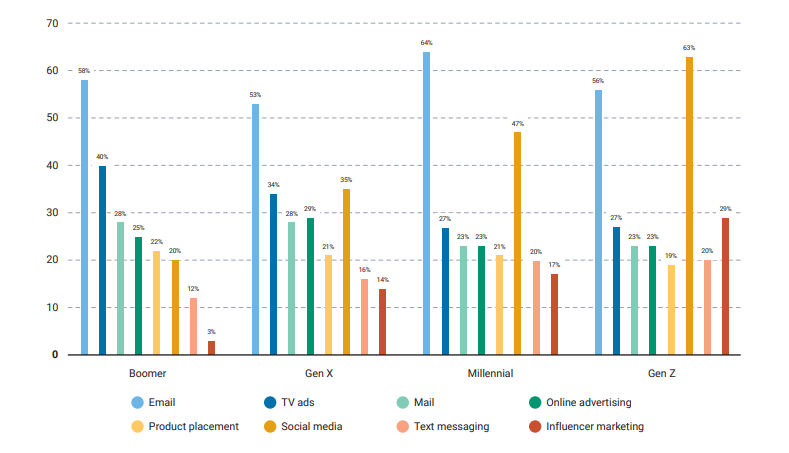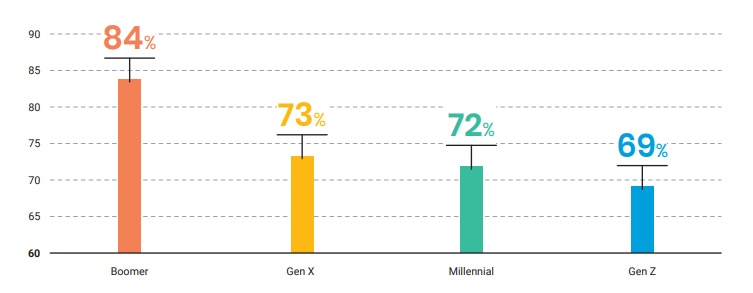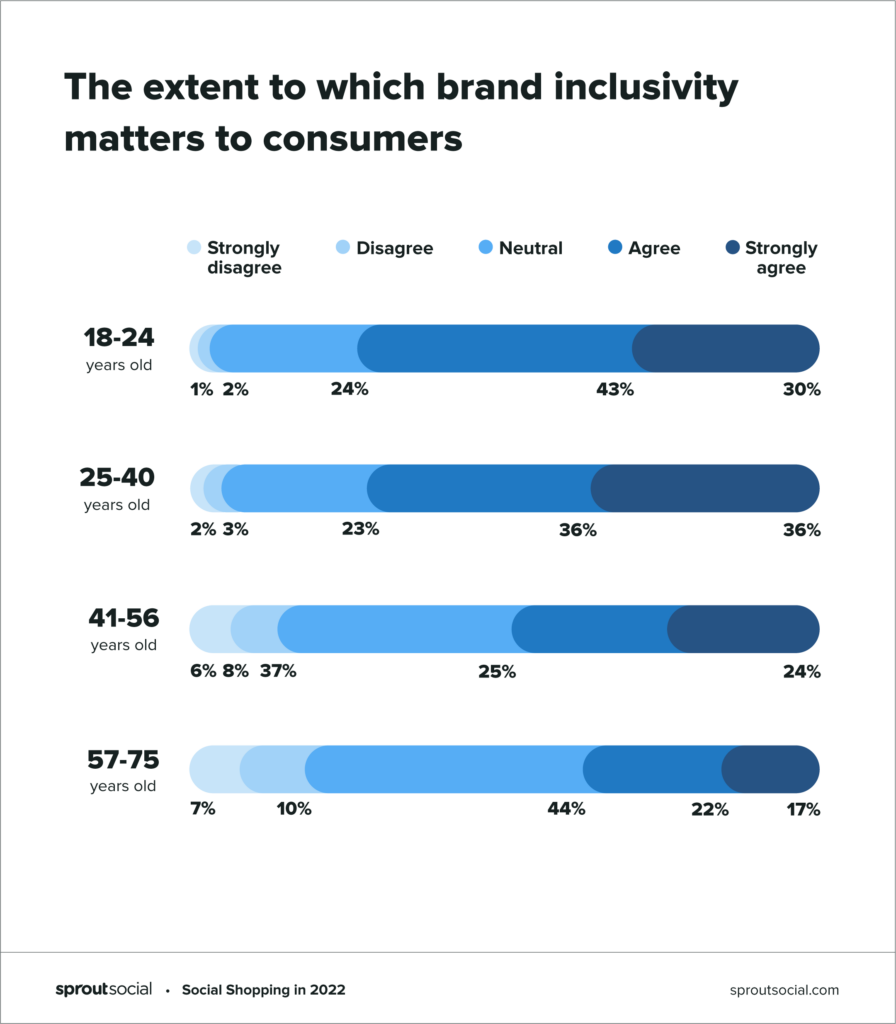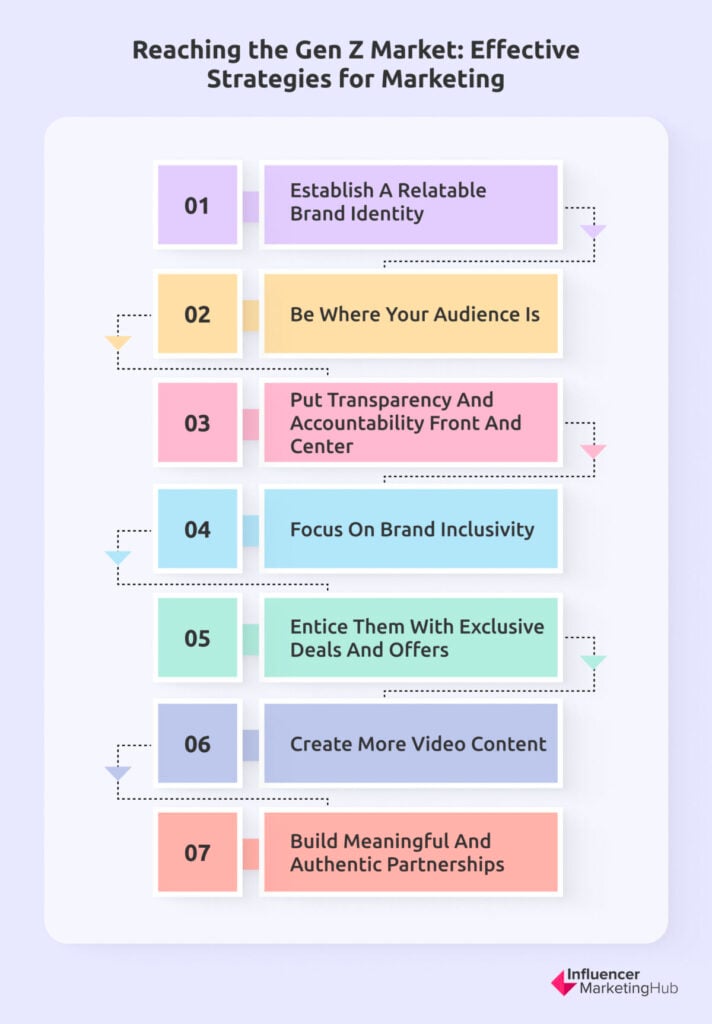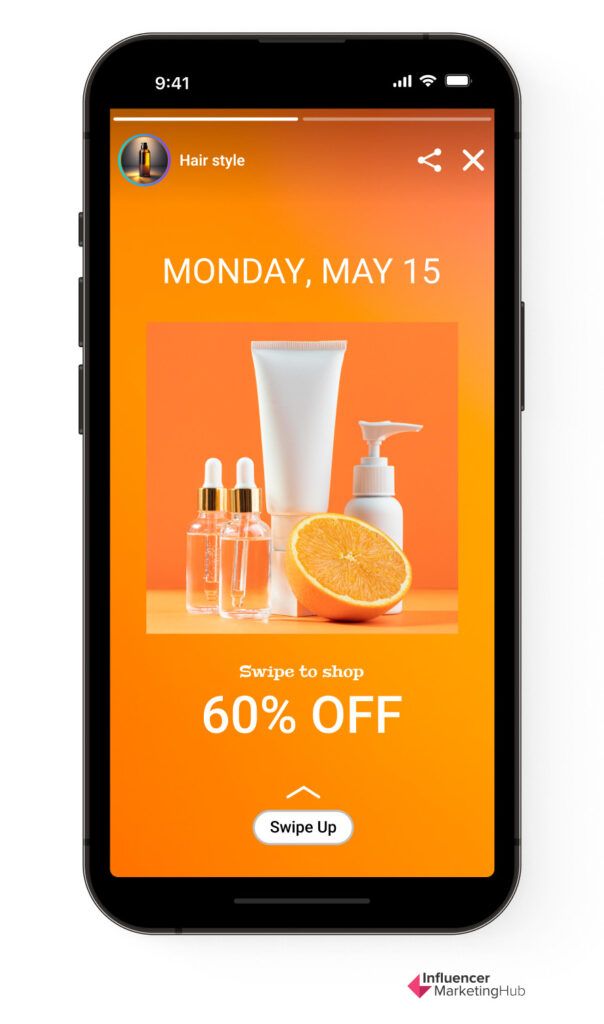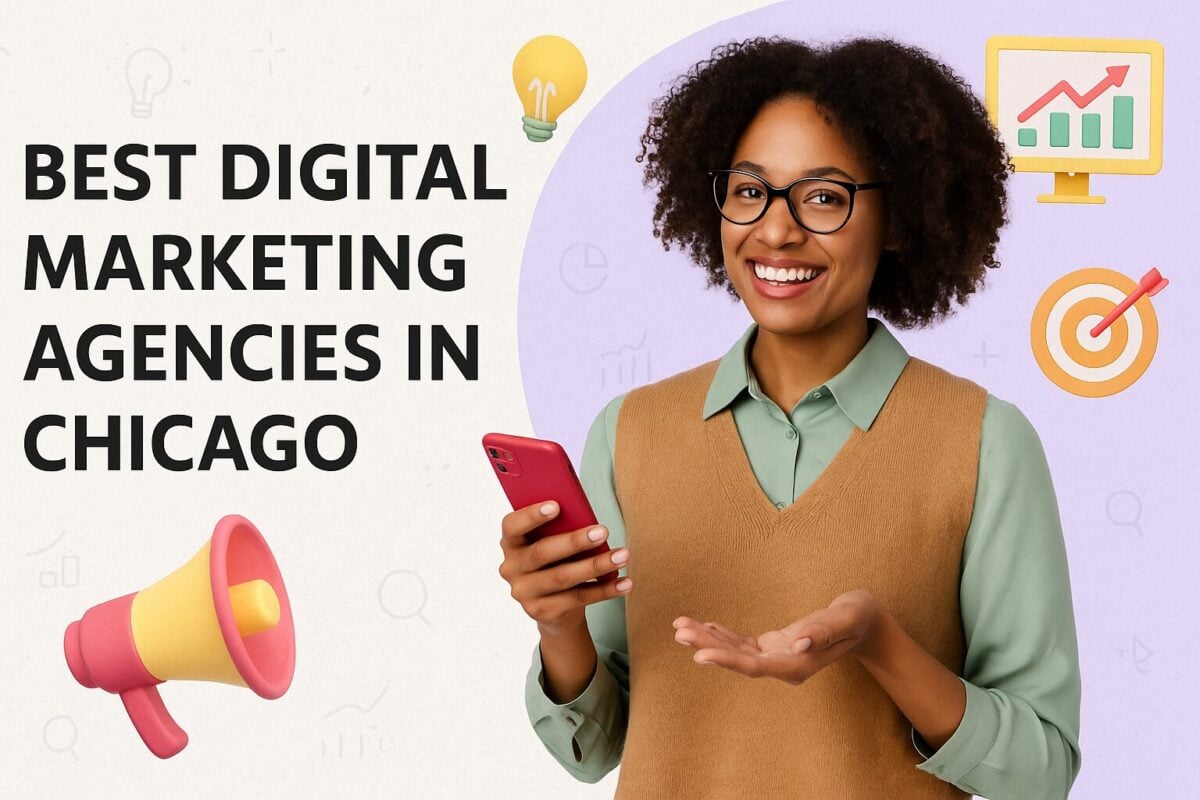Generational marketing has always been the go-to approach for many brands as it allows them to adapt their messaging according to the needs, pain points, and preferences unique to a specific age group. For the past decade or so, brands were striving to reach millennials since they commanded significant buying power in the global market. But as the buying power of Gen Z consumers gradually increases, brands may need to shift their focus toward marketing to a younger audience.
Not sure how to market to Gen Z or why you should market to them in the first place? And what’s so different about marketing to Gen Z vs. millennials? This post will provide you with all the answers you need.
Why Market to Gen Z?
Gen Z or the generation born from 1997 onward is mostly made up of teenagers and young adults right now, making the oldest Gen Z 27 years old as of 2024. However, their buying power is growing by the day. Moreover, the generation is eventually going to become the largest consumer group in a few years. So it makes sense to start aligning your marketing strategies to this audience group.
According to the latest stats on Gen Z spending habits, this generation has $360 million in disposable income. They also make up a fifth of the entire U.S. population, which is a significant number. On top of this, Gen Z tends to spend much more than millennials.
Considering these numbers, you’d be missing out on the chance to reach a highly valuable consumer group if you fail to market to Gen Z. But what exactly can you do so differently to appeal to this audience group?
What Makes Gen Z Marketing Different?
From values and interests to channel preferences and content consumption habits–Gen Z is highly different from other generations. For example, there’s a much higher preference for social media to connect with brands while other generations lean closer toward email. Let’s take a closer look at the key ways in which Gen Z marketing is different.
- According to a Data Axle survey, 63% of Gen Z-ers want brands to connect with them via social media. This makes it the top preferred channel among Gen Z consumers. Meanwhile, email is the top channel preference across all other generations.
- Personalization is highly preferred by both millennials and Gen Z consumers, with 88% and 87% of them wanting personalized advertising respectively. Meanwhile, only 77% of Baby Boomers want to see advertising personalized for them.
- Compared to all other generations, brand reputation is the most important for a Gen Z audience, followed by Baby Boomers. However, Gen Z doesn’t seem to place as much importance on product quality as other generations, although 69% still consider it a key reason to trust brands.
- A Sprout Social study found that younger consumers aged 18-24 planned on using Instagram, TikTok, and Snapchat to make online purchases. Meanwhile, millennials largely preferred Reddit and WhatsApp, Gen X-ers intended to use Pinterest, and Boomers intended to use Facebook.
- Brand inclusivity was more important to Gen Z-ers than to other generations. At least 73% of Gen Z consumers said brand inclusivity mattered to them. Millennials came close behind with 72% saying that it mattered to them. However, only 59% of Gen X-ers and 39% of Baby Boomers said that brand inclusivity was important.
7 Strategies to Market to a Gen Z Audience
Now that you have some insight into what makes Gen Z marketing different, it’s time to break down some of the key strategies you can use to connect to this audience group. Here are seven Gen Z marketing strategies that your brand can use to make a greater impact.
1. Establish a Relatable Brand Identity
The first thing you have to ask yourself is whether Gen Z will be able to relate to your brand. Do you have a brand identity that’s fun and approachable? Do you have the kind of brand voice that will resonate with a Gen Z audience?
While you have to be careful not to come across as a “try-hard,” you need to align your brand identity with the type of audience you want to reach. This means looking at the interests and preferences of a Gen Z audience as well as the language they use in their interactions and using that to develop an identity that’s more relatable to them.
Not only will you have to adapt your overall brand personality and tone, but you’ll also have to develop a strong visual identity that will appeal to your Gen Z audience. This identity should then transcend to your marketing materials–from your ad creative to your landing pages to your social media content.
Duolingo serves as an excellent example of a brand that has adapted its identity to appeal to a Gen Z and millennial audience. The language learning platform has created a hilarious brand identity centered on being threatening and unhinged, making it one of the most-loved brands on the internet.
2. Be Where Your Audience Is
Of course when marketing to a Gen Z audience, you have to meet them where they are. This means focusing on the specific channels and platforms that are frequently used by this audience group. While social media is big with Gen Z-ers, you’re never going to make an impact on platforms like Facebook, which they hardly ever use.
According to Pew Research Center, Facebook usage among U.S. teens has seen a drastic drop since 2014-15. Although it was the most used platform at the time with 71% of teens using it, the numbers have since dropped to just 32%. Now YouTube is the most popular choice among U.S. teens, with 95% of them using it.
The appearance of platforms like TikTok has also changed the game. Now this app is the second most used social media platform among teens in the U.S., with 67% of them using it. Instagram comes next with a 62% usage, followed by Snapchat with 59%. So if you’re marketing to a Gen Z audience, these are the platforms you should focus on.
Want to Reach Gen Z Where They Are?
Connect with your audience on platforms like TikTok to maximize your brand’s impact. Start here.
3. Put Transparency and Accountability Front and Center
Gen Z-ers want to make sure that they’re doing business with brands whose values and beliefs align with theirs. They’d readily switch to a different brand if they feel that its core values are better aligned with theirs. So to connect with this generation of consumers, brands need to highlight their values, practices, and beliefs in a transparent manner. This will allow Gen Z-ers to make informed decisions and help them understand your brand’s social, environmental, and economic impact.
This generation of consumers is much more socially conscious and inquisitive enough to do their research about brands compared to other generations. Among the core brand values that appeal to them, Gen Z-ers prioritize things like diversity, sustainability, environmentalism, world hunger, and climate change. They also expect brands to drive societal change and engage in fair labor practices.
In fact, Snapchat found that three-fourth of Gen Z consumers tend to maintain loyalty toward businesses that speak up about social issues and are socially responsible. Some of the top values that drive purchases among Gen Z included having fair labor policies, treating employees fairly, and having sustainable manufacturing practices.
Brands like VEJA are extremely transparent with their business practices. They regularly share social media content to provide information about the materials they use and the people who make their shoes. This is an excellent example of marketing in a way that will resonate with a Gen Z audience.
4. Focus on Brand Inclusivity
As mentioned in the Sprout Social study earlier, brand inclusivity is highly important to Gen Z consumers. Brands need to focus on inclusivity in every aspect of their business including production and marketing.
This would involve creating products and services keeping in mind the unique needs and challenges of different people–whether this is in terms of factors such as race, skin color, gender, or physical ability. It would also involve being inclusive of the creators they work with and the marketing campaigns they develop.
Brands such as Fenty Beauty keeps things inclusive by offering a wide range of products suitable for people with different facial features and skin tones. The brand also takes great care to feature real people of all races and genders in their social media content to show that their products are for everyone.
@fentybeauty "My mom was a fearless woman, she was bold and not afraid to play with her look" ♥️ For #AAPIHeritage Month, @Mexicanbutjapanese ? shares details of how her mom inspired her love for beauty and skincare ? Our #FentyFam is filled with so many inspiring ppl, but this mama was a whole notha level of coolness ?? We're just happy to use our platform to amplify and make these stories louder. Happy #AAPIHeritageMonth ♬ original sound - Fenty Beauty
The Snapchat study from above also found that promoting healthy and inclusive workplace cultures for employees is a key purchase driver for 63% of Gen Z users. So beyond creating inclusive marketing content and products, inclusivity has to be a part of your brand essence. It needs to transcend internally in the way you treat employees and operate your business.
5. Entice Them with Exclusive Deals and Offers
One area in which Gen Z consumers are like most generations is that they love deals and offers. In fact, according to the Data Axle study from earlier, almost 70% of Gen Z-ers follow a brand on social media mainly because they want to get access to deals and offers in real-time. This is their main motivator, followed by simply wanting to support the brand because they enjoy the product.
So if you want your Gen Z audience to follow you on social media and buy from your brand, keep those exclusive deals and offers coming. You could use your social media platforms to highlight flash sales and limited-time deals that your followers can take advantage of. You can even leverage features such as Stories to showcase temporary offers and create a fear of missing out.
For instance, some companies uses Instagram Stories to showcase a series of limited-time discounts on their products.
6. Create More Video Content
Considering the popularity of platforms like YouTube and TikTok as well as features such as Instagram Reels, it’s safe to say that video is huge among the Gen Z population. They may not be spending as much time reading blog posts or text-based content. So it’s important to invest your marketing resources into creating more videos, specifically short-form videos.
Whether it’s for your social media posts or your advertising campaigns, videos can work wonders in grabbing the attention of Gen Z consumers. In fact, when seeing brand ads on social media, video is the top preferred content format among Gen Z-ers. With the ability to combine both visual and audio elements, video can be an impactful and engaging way to get your message across. And you can do so in the shortest amount of time possible, helping you cater to shorter attention spans.
Ready to Engage Gen Z with Engaging Video Content?
Start creating impactful short-form videos on TikTok to capture attention and drive results. Get started here.
7. Build Meaningful and Authentic Partnerships
With authenticity being one of the key values of Gen Z consumers, you have to make sure that your partnerships are also genuine and meaningful. Whether you’re working with influencers, celebrities, or other brands, it’s crucial to build an authentic connection so that your partnership comes off as authentic.
This is particularly important now that the influencer marketing landscape has become highly oversaturated, with influencers promoting brands and products just for the sake of getting paid. There’s been a growing distrust in brand-influencer partnerships, which can be detrimental to your efforts at connecting with a Gen Z audience. Latest reports even revealed that 44% of Gen Z consumers will no longer consider choosing brands that inauthentically partner with a celebrity or influencer.
So the best thing you can do is to find influencers who genuinely love your products and are ideally already fans of your brand. This can make your partnership come off as even more authentic since the influencer has more than likely already spoken about your brand many times before.
Update Your Gen Z Marketing
When you’re trying to reach a Gen Z audience, there are many things you have to do differently since this generation of consumers has different values and motivations than previous generations. They value authenticity and social consciousness more than anything, which will be the key to updating your Gen Z marketing strategy.
Ready to Elevate Your Gen Z Marketing Strategy?
Connect authentically with the next generation on platforms they love, like TikTok. Start here to make a lasting impact.
Frequently Asked Questions
What are the key characteristics of Gen Z consumers?
Gen Z consumers, born from 1997 onward, are known for their strong preference for social media engagement, emphasis on brand transparency and accountability, and a desire for inclusivity in marketing. They prioritize brands that align with their values, such as sustainability and social justice, and are more likely to switch brands if they feel their values do not align.
Why is it important for brands to market to Gen Z?
Marketing to Gen Z is crucial because they represent a significant and growing consumer group with substantial buying power, estimated at $360 billion in disposable income. As this generation continues to mature, they are expected to become the largest consumer demographic, making it essential for brands to adapt their strategies to engage this audience effectively.
What platforms should brands focus on when targeting Gen Z?
Brands should focus on platforms where Gen Z is most active, including YouTube, TikTok, Instagram, and Snapchat. These platforms are preferred by Gen Z for content consumption and interaction with brands, making them ideal channels for marketing efforts aimed at this demographic.
How can brands establish a relatable identity for Gen Z?
To create a relatable brand identity for Gen Z, companies should adopt a fun and approachable tone that resonates with their audience. This involves understanding Gen Z's interests and language while developing a strong visual identity that reflects their values across all marketing materials.
What role does video content play in engaging Gen Z consumers?
Video content is highly effective in engaging Gen Z consumers due to their preference for visual media over text-based content. Short-form videos, in particular, are popular on platforms like TikTok and Instagram Reels, making them an essential component of marketing strategies aimed at capturing the attention of this audience.
What are some effective strategies for building partnerships with influencers targeting Gen Z?
To build effective partnerships with influencers targeting Gen Z, brands should seek out influencers who genuinely align with their products and values. Authenticity is key; collaborations should feel genuine rather than transactional to foster trust among Gen Z consumers who are increasingly skeptical of influencer marketing.

